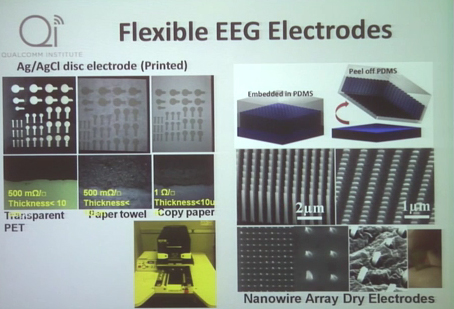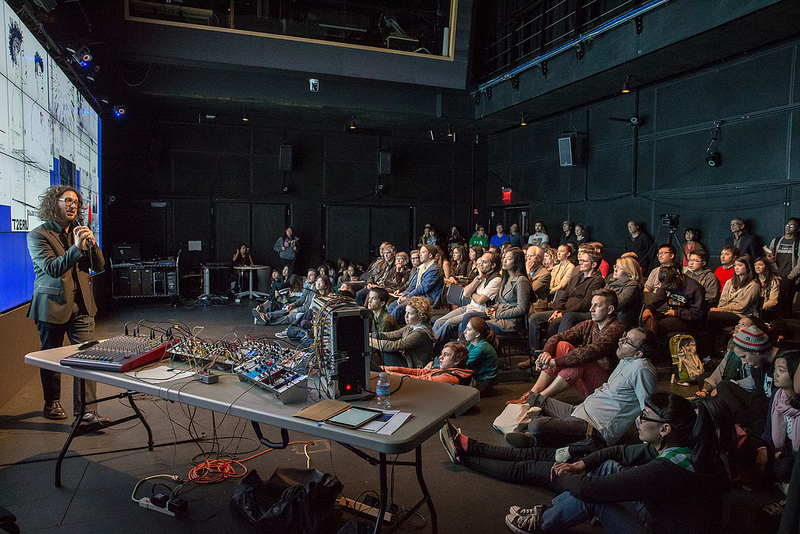Qualcomm Institute Invites Proposals from UC San Diego Faculty for Strategic Research Grants
San Diego, March 3, 2014 -- In a continuing effort to offer peer-reviewed seed research awards to faculty and research scientists on the University of California, San Diego campus, the Qualcomm Institute has launched the third round of its Calit2 Strategic Research Opportunities (CSRO) grants. The new Call for Proposals follows earlier rounds when the institute awarded a total of $1.5 million in CSRO grants to UC San Diego faculty in 2010 and 2012.
|
The deadline for submitting 3-to-5 page proposals is April 30, 2014, and the one-year grants will take effect on July 1, 2014. Each award typically provides a 50-50 combination of cash and in-kind support (e.g., access to Calit2 technical personnel, equipment, lab space, or services), or graduate student fellowships. The maximum value of any award will be $50,000. In a departure from previous rounds, there is no requirement of matching funds for proposals in 2014.
QI uses gifts and grant funds from private sources, notably the Qualcomm Foundation, to underwrite the CSRO program. Additional funds may come from affiliated research centers at UC San Diego.
According to QI’s Rao, the institute is expanding the types of research eligible for CSRO funding this year, while simultaneously trying to align them with campus initiatives. Projects should be consistent with the new UC San Diego Strategic Plan, due to be finalized this summer. The Plan’s four campus research initiatives range from understanding and protecting the planet, to exploring the basis of human knowledge and creativity, and enriching human life and society to understanding and addressing disparities in social justice, access, equity and inclusion. PIs will also be asked to indicate whether their proposals are in fields targeted by QI as part of the California Institute for Telecommunications and Information Technology (Calit2) strategic plan adopted in 2011. (QI is the UC San Diego division of Calit2.) Those targeted areas include enabling technologies – wireless, photonics, cyberinfrastructure and nano-micro-electromechanical systems (nano-MEMS) – and application thrusts (culture, energy, environment, and health).
|
“In each previous round we were able to reach out to a substantial number of faculty members who had not previously participated in the institute, either because they were recent recruits to the campus, or because they didn’t see a clear ‘path to citizenship,’ so to speak,” said CSRO Program Committee chair Curt Schurgers, who also manages the institute’s prototyping, wireless and circuits labs. “Any PI researcher on this campus is effectively eligible to submit a CSRO proposal, and we expect a large number of newcomers this year given that we have expanded the range of targeted areas where we encourage or welcome proposals.”
CSRO proposals must be submitted electronically through the online Proposal Upload manager on the program website. Faculty should read the Call for Proposals, background information on Calit2 research, its Strategic Vision, the UC San Diego Strategic Plan’s research initiatives, as well as other aspects of the CSRO program, including frequently asked questions.
Nineteen CSRO awards in 2010 topped $700,000, while for the 2012 round the institute provided more than $825,000 to 17 faculty-led projects.
The Qualcomm Institute has invested heavily in personnel, equipment and services, and the CSRO program allows the institute to allocate a portion of those resources to new projects that are liable to produce proofs of concept, early prototypes, research findings and early-stage successes that may position a CSRO grantee to go after much larger federal grants in future.
|
All proposals will be evaluated under a peer-review process, with the final decision taking into account how the project satisfies the goals and principles of the CSRO program, including its scientific and technical merits, relevance to the strategic objectives, realism, and relevance to the Qualcomm Institute. Projects will also be evaluated based on how they fit into the CSRO program’s need to promote a balance between allocations across the research initiative thrusts, across disciplines and functional areas within the institute, as well as across different proposal types (research, technology development, grant writing).
CSRO is not a traditional mini-grant program, nor are the projects renewable, and the program “does not seek to provide emergency or bridge funding to existing research projects,” said Schurgers. “Our funding should kickstart new projects. So the proposals should answer such questions as: How does the proposed project bring in new ideas or collaborators to QI? And how does it fit into research priorities at the campus and institute levels?”
Related Links
Calit2 Strategic Research Opportunities
CSRO Call for Proposals
UC San Diego Research Initiatives
UC San Diego Strategic Plan
Media Contacts
Doug Ramsey, 858-822-5825, dramsey@ucsd.edu



